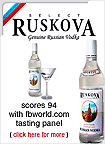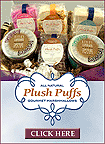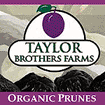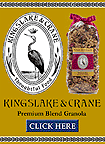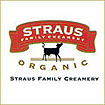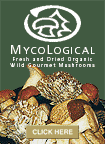Hocus-Pocus, and a Beaker of Truffles
By
DANIEL PATTERSON
A
TRUFFLE by any other name may smell as sweet, but what if that
name is 2,4-dithiapentane? All across the country, in restaurants
great and small, the truffle flavor advertised on menus is increasingly
being supplied by truffle oil. What those menus don’t say
is that, unlike real truffles, the aroma of truffle oil is not
born in the earth. Most commercial truffle oils are concocted
by mixing olive oil with one or more compounds like 2,4-dithiapentane
(the most prominent of the hundreds of aromatic molecules that
make the flavor of white truffles so exciting) that have been
created in a laboratory; their one-dimensional flavor is also
changing common understanding of how a truffle should taste.
When
I discovered truffle oil as a chef in the late 1990s, I was thrilled.
So much flavor, so little expense. I suppose I could have given
some thought to how an ingredient that cost $60 an ounce or more
could be captured so expressively in an oil that sold for a dollar
an ounce. I might have wondered why the price of the oils didn’t
fluctuate along with the price of real truffles; why the oils
of white and black truffles cost the same, when white truffles
themselves were more than twice as expensive as black; or why
the quality of oils didn’t vary from year to year like the
natural ingredients. But I didn’t. Instead I happily used
truffle oil for several years (even, embarrassingly, recommending
it in a cookbook), until finally a friend cornered me at a farmers
market to explain what I had should have known all along. I glumly
pulled all my truffle oil from the restaurant shelves and traded
it to a restaurant down the street for some local olive oil.
That
truffle oil is chemically enhanced is not news. It has been common
knowledge among most chefs for some time, and in 2003 Jeffrey
Steingarten wrote an article in Vogue about the artificiality
of the oils that by all rights should have shorn the industry
of its natural fig leaf. Instead, the use of truffle oil continued
apace. The question is, Why are so many chefs at all price points
- who wouldn’t dream of using vanillin instead of vanilla
bean and who source their organic baby vegetables and humanely
raised meats with exquisite care- using a synthetic flavoring
agent.
Part
of the answer is that, even now, you will find chefs who are surprised
to hear that truffle oil does not actually come from real truffles.
I thought that it was made from dried bits and pieces of truffles
steeped in olive oil, said Vincent Nargi of Cafe Cluny in Manhattan,
which made me put down my pen and scratch my head. The flavor
of real truffles, especially black, is evanescent, difficult to
capture in an oil under the best of circumstances.
But,
much as I did for years, chefs want to believe. Stories of sightings
of natural truffle oil abound, like a gourmands answer to the
Easter Bunny or Santa Claus. One chef told me in an excited, slightly
conspiratorial tone that Jing Tio of Le Sanctuaire in Santa Monica,
Calif., who sells high-quality specialty ingredients to chefs,
mixed his own oil to order.
This
seemed unlikely. When I asked Mr. Tio, he gave me a funny look.
Natural he said, rolling his eyes. Nooo ...
Truffle
companies are secretive, and speaking to their representatives
does little to illuminate their production techniques. I was told
by Federico Balestra at Sabatino Tartufi that its oil is now 100
percent organic, made from dried truffles and other ingredients
with flavors similar to truffle. Vittorio Giordano of Urbani Tartufi
called its manufacturing method, though conducted in a laboratory,
a natural process. He described the essence that his company uses
as something from the truffle that is not the truffle.
Whereas
once truffles were hallmarks of local cooking, -black in France
and white in Italy - the globalization of cuisine has led to worldwide
demand for an ingredient whose output continues to decline. As
with some highly collectible wines, the virulent combination of
high value and scarcity have created an environment ripe for fraudulent
behavior. French agencies conduct chemical analyses of black truffles
to ensure that they are not inferior Chinese or Spanish truffles
soaked in truffle oil or juice. White truffles from other areas
of Italy have been known to show up at the Alba market, summer
truffles passed off as winter. But when it comes to the oil, chefs
are helping to perpetuate the fraud. Why?
Call it the LVMH-ization of cooking. Truffles have become a luxury
brand, one that connotes a way of life as much as a style of cooking.
Chefs use truffle oil because it’s easy to add a gloss of
glamour with it - and because it helps sell dishes, S. Irene Virbila,
chief restaurant critic of The Los Angeles Times, said in an e-mail
message.
Although
the scent of a truffle just dug can be one of the most profound
gustatory experiences of the Western world, its one that not many
people in this country have had on truffles native soil. Once
there were only a few expensive and exclusive restaurants that
recreated that experience, which only select customers could afford.
Truffle oil has simultaneously democratized and cheapened the
truffle experience, creating a knockoff that goes by the same
name.
The
competitiveness of the restaurant scene has a lot to do with this
trend. What most people know of truffles is truffle aroma, which
has helped shape their expectations of what they’re paying
for - and how much they should have to pay to get it. Price is
definitely a factor, said Shea Gallante of Cru in Manhattan, who
uses black truffle oil to reinforce the flavor of real black truffles
in a midwinter pasta dish. If I didn’t use the two drops
of oil I would have to add another 8 to 10 grams of truffle, he
said, making the dish too expensive for his clientele. Many chefs
agree that the quality of truffles in this country has fallen
in recent years, added to the fact that every minute a truffle
spends out of the ground enervates its flavor. The increased scrutiny
of imported goods hasn’t helped; prolonged stays in customs
might be keeping the country safe from exploding fungi, but its
not doing much for the truffles aromatic intensity.
And
Americans, as many were quick to note, like big flavors. People
expect the slap in the face of truffle oil, said Jonathan Gold,
the restaurant critic for LA Weekly. They have lost their taste
for subtlety; they want bigger than life flavors that are amped
up with aromatics. That’s American cooking at the moment.
Many chefs are turning to truffle oil as a way to get truffle
aromas that, as many chefs put it, jump off the plate, often dressing
real truffles in the oil before sending them to the table to heighten
their effect. It raises the question, What will happen when there
is a synthetic heirloom tomato scent or an imitation ripe peach
flavor? Are we moving toward an era of fake food?
Probably
not. Truffle oil seems unique in this regard. Most chefs I spoke
with said they were undisturbed by its artificiality, although
they are quite concerned with its proper usage, which chiefly
comes down to restraint: less, in this case, is more. This is
curious, considering that the same chefs will say in the next
breath that the best way to use real truffles is in profusion.
Some call truffle oil authentic only when used in conjunction
with real truffles, while others maintain that they like it for
what it is, something altogether different.
I
used to use white truffle oil a lot, but now I only use a little
bit in my liquid black truffle ravioli, Grant Achatz of Alinea
in Chicago told me. It adds a little more perfume, a slightly
different flavor. I cut my teeth cooking at the French Laundry,
and when we were using truffles there was always a bottle close
by. But after I was on my own for a while I started to ask myself
why I was using it, and I didn’t have a good answer. It
doesn’t even taste like truffle.
Chris
LHommedieu, chef de cuisine at Michael Mina in San Francisco,
used truffle oils during his tenure as chef de cuisine at Per
Se in New York, although he said he never developed a taste for
them. But when asked how much of his aversion to truffle oil was
due to its artificiality, he told me: One hundred percent. I learned
that from Jean-Louis.
Mr.
LHommedieus recollection involved the late chef Jean-Louis Palladin,
with whom he worked at Palladin, a Manhattan restaurant that is
now closed. Returning from a trip out of town, Mr. Palladin was
enraged to walk into the kitchen and find that in his absence
bottles of truffle oil had cropped up everywhere. Grabbing two
of them, he called the staff out to the alley behind the restaurant
where the garbage was held. He hurled the oil at the side of the
building, smashing the glass bottles against the wall. Its full
of chemicals, he screamed at his confused and frightened staff
members, who scrambled back to the kitchen through the gathering
scent of truffle oil mingled with the fetid air of the alley.
No more!
I
couldn’t have said it better myself.
Daniel
Patterson is the chef and owner of Coi, a restaurant in San Francisco.
With this column, De Gustibus returns to The New York Times as
an occasional forum for various writers to employ opinion, argument
or provocation in reflections on food or drink.
|




